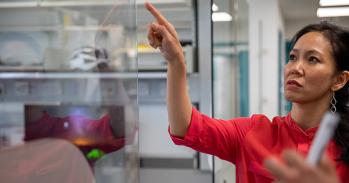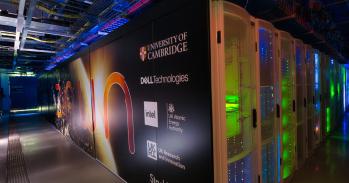
Study has relevance to all cancers that are suspected to have a stem cell origin
Study has relevance to all cancers that are suspected to have a stem cell origin
Researchers at the University of Cambridge have discovered that a single mutation in a leukaemia-associated gene reduces the ability of blood stem cells to make more blood stem cells, but leaves their progeny daughter cells unaffected. Their findings have relevance to all cancers that are suspected to have a stem cell origin as they advance our understanding of how single stem cells are subverted to cause tumours.
Published this week in PLOS Biology, the study by Professor Tony Green and his team at the Cambridge Institute for Medical Research (CIMR) is the first to isolate highly purified single stem cells and study their individual responses to a mutation that can predispose individuals to a human malignancy. This mutation is in a gene called JAK2, which is present in most patients with myeloproliferative neoplasms (MPNs)—a group of bone marrow diseases that are characterized by the over-production of mature blood cells and by an increased risk of developing leukaemia.
Using a unique mathematical modelling approach, carried out in collaboration with Professor Ben Simons at the Cavendish Laboratory in Cambridge, in combination with experiments on single mouse stem cells, the researchers identified a distinct cellular mechanism that operates in stem cells but not in their daughter cells.
“This study is an excellent example of an inter-disciplinary collaboration pushing the field forward,” says lead author Dr David Kent. “Combining mathematical modelling with a large number of single stem cell assays allowed us to predict which cells lose their ability to expand. We were able to reinforce this prediction by testing the daughter cells of single stem cell divisions separately and showing that mutant stem cells more often undergo symmetric division to give rise to two non-stem cells.”
Characterizing the mechanisms that link JAK2 mutations with this pattern of stem cell division—a pattern that eventually leads to the development of MPNs—will inform our understanding of the earliest stages of tumour establishment and of the competition between tumour stem cells, say the authors. The next step, currently underway at the Cambridge Institute for Medical Research, is to understand the effect that acquiring additional mutations has on blood stem cells, as these are thought to drive the expansion of blood progenitor cells, leading to the eventual transformation to leukaemia that occurs in patients with MPNs.
Citation: Kent DG, Li J, Tanna H, Fink J, Kirschner K, et al. (2013) Self-Renewal of Single Mouse Hematopoietic Stem Cells Is Reduced by JAK2V617F Without
Compromising Progenitor Cell Expansion. PLoS Biol 11(6): e1001576. doi:10.1371/journal.pbio.1001576
Press release provided by PLOS Biology.
This work is licensed under a Creative Commons Licence. If you use this content on your site please link back to this page.





